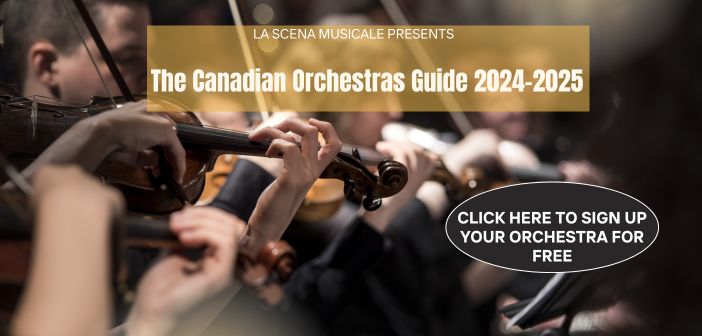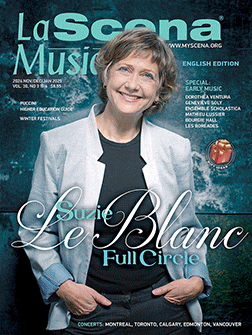Never heard of Carbonelli? Don’t feel too bad about it. The Vivaldi scholar Michael Talbot writes that he ‘has remained unknown, even to specialists’. Listen to the music, though, and you will wonder how work of such quality and intricacy could vanish so comprehensively into the mists of history. Carbonelli was a star violinist in London during Handel’s time. Born in Livorno in 1694 and possibly half-French, he becomes concertmaster at Drury Lane Theatre at the age of 25 and a much sought-after soloist. The Duke of Rutland paid for the publication of 12 sonatas and Carbonelli seemed well set…
Browsing: Lebrecht Weekly
Never heard of Carbonelli? Don’t feel too bad about it. The Vivaldi scholar Michael Talbot writes that he “has remained unknown, even to specialists.” Listen to the music, though, and you will wonder how work of such quality and intricacy could vanish so comprehensively into the mists of history. Carbonelli was a star violinist in London during Handel’s time. Born in Livorno in 1694 and possibly half-French, he becomes concertmaster at Drury Lane Theatre at the age of 25 and a much sought-after soloist. The Duke of Rutland paid for the publication of 12 sonatas and Carbonelli seemed well set…
The texts of this song cycle were written by Sergei Yesenin between 1914 and 1920, a period of world war, revolution and civil war. Yesenin committed suicide in 1925 at the age of 30. His poetry is steeped in religious ritual, village life and bucolic imagery. The music was composed in 1977 by the contemplative, conservative Sviridov, who was born in the thick of Russia’s metamorphosis. His idiom – narrative, tonal, almost static at times – reflects the stand-off between political upheaval and the impervious cycles of nature. The half-hour cycle is sung here in an orchestral setting made specially…
Never forget that Maurice Ravel was more Basque than French. His rhythms and harmonies belong to the borderlands. He is happiest with the smell of Rioja in his nostrils. There must be other pianists who have paired Ravel’s two piano concertos on record with De Falla’s Nights in the Garden of Spain, but I can’t call any recent releases to mind. Or maybe Steven Osborne’s account is just so thrilling that it has erased them from memory. There is never a moment in this performance when you doubt the absolute rightness of his choices. In the Ravel G major, Osborne…
Great recordings are easy to review. Likewise bad ones. About 99.5 percent of all releases fall somewhere in between. Of these, four in five quickly outlast their initial attraction. I had high hopes for Shostakovich’s first symphony from the Luxembourg Philharmonic and its Spanish music director, Gustavo Gimeno. The orchestra has announced a multi-record contract with the Dutch label, Pentatone, one of the last remaining labels that puts sound quality first. Gimeno, until lately principal percussionist with the Concertgebouw orchestra, has got plenty of wind in his sails. So what’s wrong with this release? Hard to isolate it. I ordered…
When the English contralto Norma Procter died a few weeks ago at the age of 89, readers remembered seeing Kathleen Ferrier in her audience at Norma’s London debut, at Southwark Cathedral, in 1948. This was typical Ferrier. Six years before she had been a switchboard operator in Lancashire with no hopes of a music career. Now an international star, she took every opportunity to offer support and encouragement to others on the way up. Hearing that Norma was studying in London with her own teacher, Roy Henderson, Ferrier invited her to stay over at her own West Hampstead flat rather…
The trouble with keeping records is that library science has yet to devise a method of telling you where any piece of music will be just when you really need it. The Schumann piano concerto, for instance. If I look under Schumann, I find two versions. But then there are four more under Grieg – that’s how the record industry likes to pair them up – and heaven knows how many more in box sets of the lifetime works of individual great pianists. Online, it’s no easier, since the same recording will crop up a dozen times under different covers…
There is no wholly recommendable performance on record of Mahler’s third symphony. The earliest, by F. Charles Adler in 1952, is faultlessly idiomatic, as is Jascha Horenstein’s 1970 LSO account, but both are marred by inferior orchestral playing and poor sound. Claudio Abbado’s 2007 DVD from Lucerne is as good as it gets, though even a lifelong Mahlerian like Abbado struggles with the lop-sidedness of this amalgam of nostalgic pastoralism and saloon-bar philosophy. No-one can satisfactorily explain what Friedrich Nietzsche is getting at in the fourth movement contralto solo. It’s just odd. If you listen just to the second disc…
In the dying years of the Soviet Union I became aware of dozens of symphonists who survived on the fringes of musical society, tolerated by the authorities but never given a proper hearing. Once I got past the immense, historic figures of Mieczyslaw Weinberg and Galina Ustvolskaya, both pivotal in the life of Dmitri Shostakovich, I kept discovering other samizdat composers who, for some reason, seemed to speak my language. At a time when western musicians were subjected to a dictatorship of style and serial ideology if they wanted to get on the BBC, these covert Russians were free to…
Do not be put off by the cover, which shows two Victorians of different gender having a pre-Raphaelite snog. What they look like post-Raphael is left to the imagination, as is any thematic connection between Gilbert Baldry’s The Kiss and a set of Schumann pieces that evoke male friendships. Not long ago, record companies employed picture researchers and their covers bore some relevance to the music inside. These days, the images seem to be picked by a computer linked to the Amazon sales chart. Do not be put off either by the coupling of Schumann with a record newbie whose…












